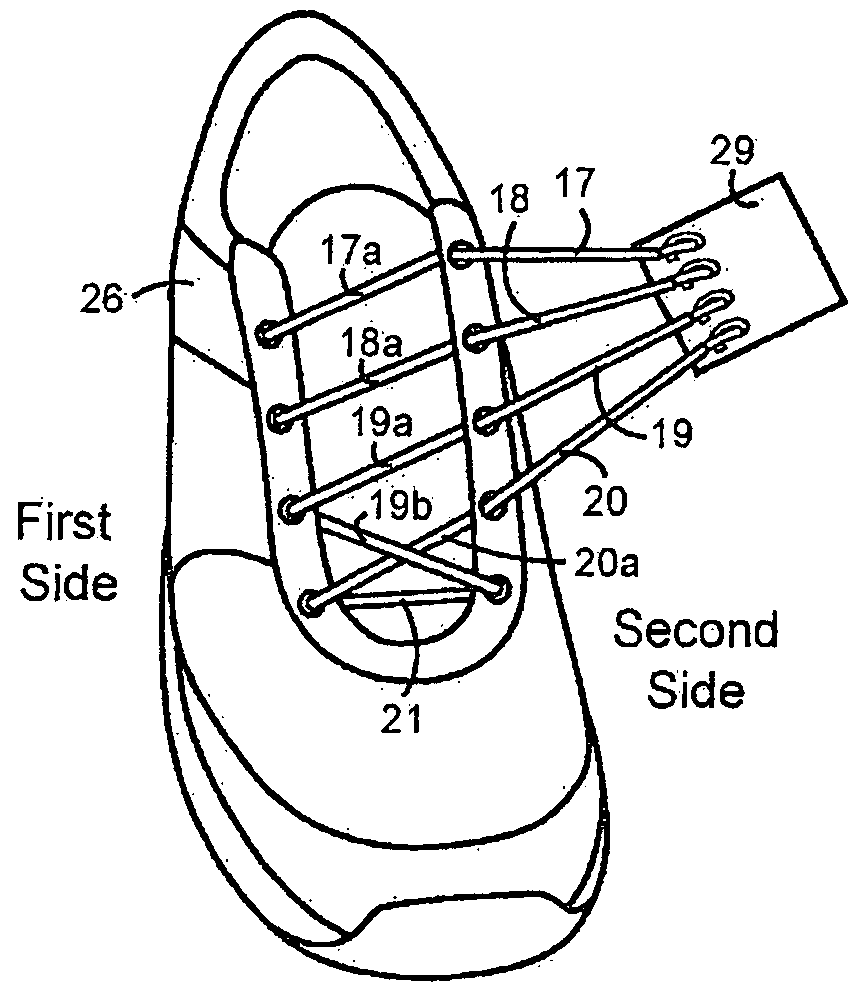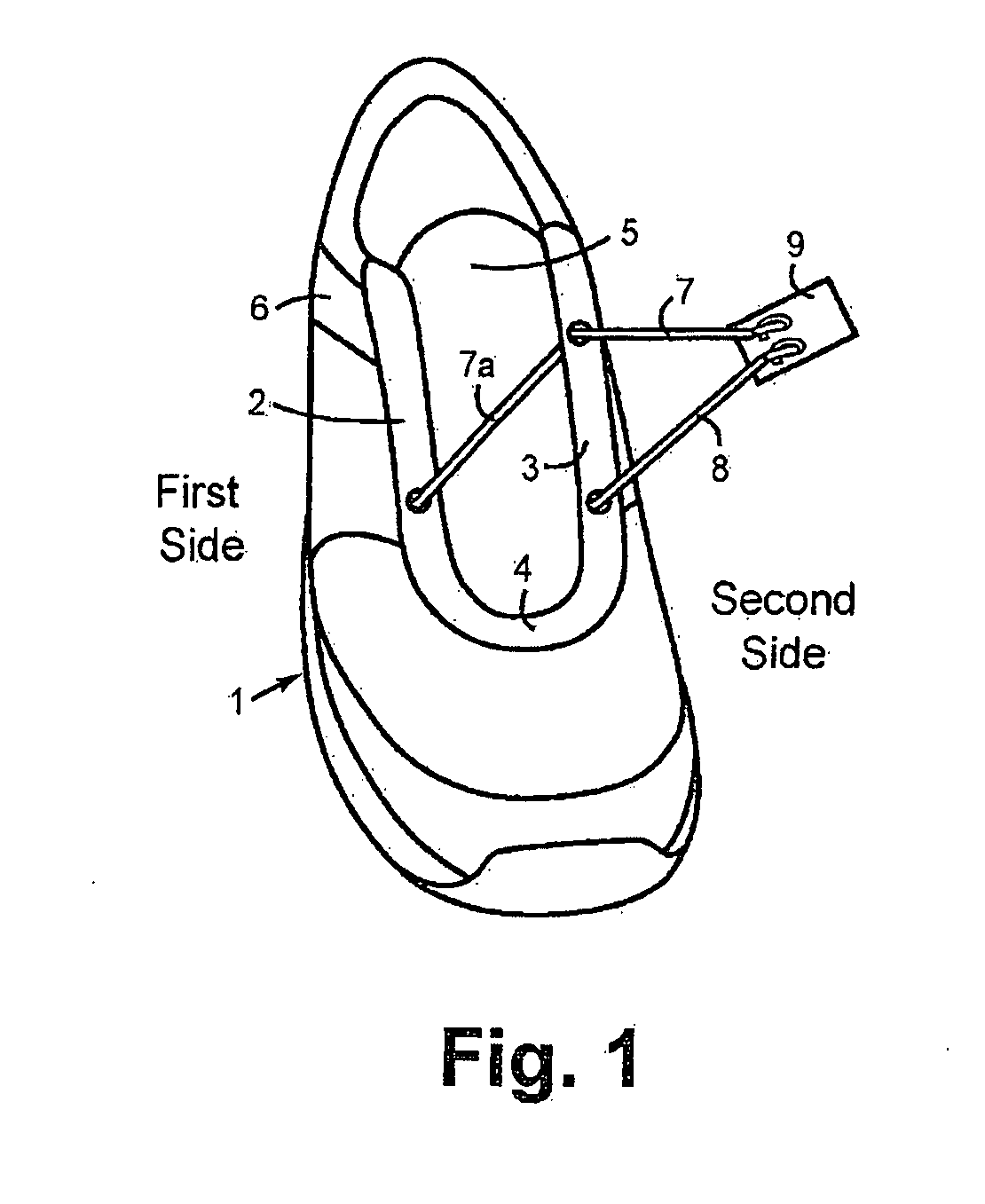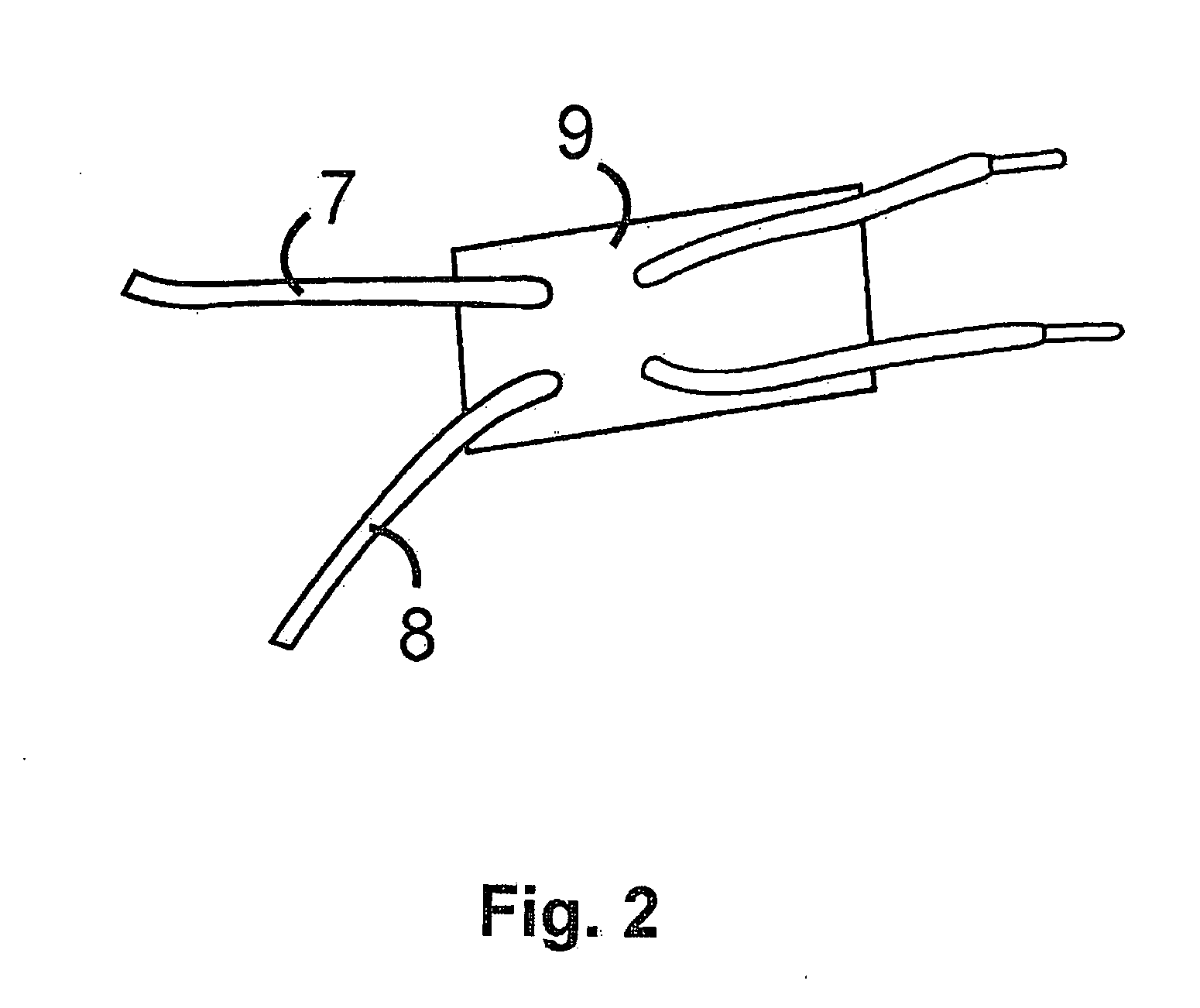Apparatus and method for fastening a shoe
a technology for shoes and accessories, applied in the field of accessories and methods for fastening shoes, can solve the problems of difficult operation of conventional means for fastening shoes with laces that needed to be tied, many users do not like to wear shoes, and the strap closure does not look attractive, etc., to achieve the effect of easy tightening by the user and low friction
- Summary
- Abstract
- Description
- Claims
- Application Information
AI Technical Summary
Benefits of technology
Problems solved by technology
Method used
Image
Examples
Embodiment Construction
[0027]Reference is now made to FIG. 1, which illustrates a shoe 1 with a fastening system constructed and operative in accordance with a preferred embodiment of the present invention. It should be noted that, while only a right shoe is shown and discussed throughout this disclosure, one skilled in the art will recognize that the various embodiments of the fastening system can be easily incorporated into a left shoe as well as into other articles of footwear such as sneakers, sandals, boots, skates, slippers, etc.
[0028]It should be also noted that, while FIG. 1 shows the first side of the shoe access opening as adjacent to the outside of the shoe, and the second side of the shoe access opening as adjacent to the inside (or arch side) of the shoe, one skilled in the art will recognize that the references herein to first side and second side are merely for convenience of reference and that the disclosures herein apply equally where the second side is adjacent to the outside of the shoe...
PUM
 Login to View More
Login to View More Abstract
Description
Claims
Application Information
 Login to View More
Login to View More - R&D
- Intellectual Property
- Life Sciences
- Materials
- Tech Scout
- Unparalleled Data Quality
- Higher Quality Content
- 60% Fewer Hallucinations
Browse by: Latest US Patents, China's latest patents, Technical Efficacy Thesaurus, Application Domain, Technology Topic, Popular Technical Reports.
© 2025 PatSnap. All rights reserved.Legal|Privacy policy|Modern Slavery Act Transparency Statement|Sitemap|About US| Contact US: help@patsnap.com



